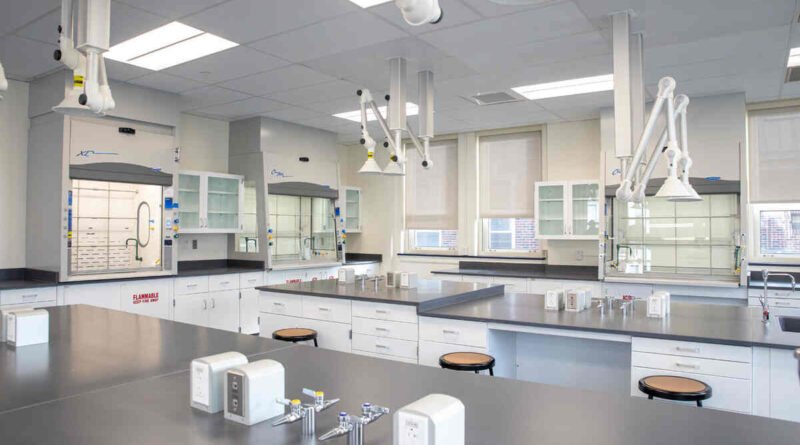What is a Laboratory Chemical Fume Hood?
A laboratory chemical fume hood is an essential piece of equipment in many scientific research and educational settings. Its primary function is to provide a safe working environment by containing and exhausting hazardous fumes, vapors, and dusts generated during chemical experiments and processes. Understanding the importance, design, operation, and maintenance of chemical fume hoods is crucial for anyone working in a laboratory setting.
Table of Contents
Importance of Chemical Fume Hoods
Chemical fume hoods play a vital role in maintaining laboratory safety. They protect laboratory personnel from exposure to toxic or harmful substances, which can cause acute or chronic health issues. By effectively capturing and expelling harmful chemicals, these hoods help prevent inhalation of dangerous vapors and ensure a safer working environment. Additionally, fume hoods can also protect sensitive experiments from contamination by external pollutants.
Design and Components of a Chemical Fume Hood
Chemical fume hoods are designed to maximize safety and efficiency. The typical fume hood consists of several key components:
1. Sash: The front-facing movable panel that can be adjusted to open or close the working area. It provides a physical barrier between the user and the hazardous materials.
2. Airfoil: Positioned at the bottom and sometimes the sides of the sash, it directs airflow into the hood to minimize turbulence and improve containment.
3. Baffle: Located at the rear of the hood, this adjustable panel controls the airflow patterns within the hood to ensure even distribution and effective capture of fumes.
4. Exhaust Duct: Connected to the ventilation system, it carries the hazardous fumes out of the laboratory and expels them safely outside.
5. Work Surface: The flat area inside the hood where the experiments are conducted. It is usually made of materials resistant to chemical spills and corrosion.
Operation of a Chemical Fume Hood
Proper operation of a chemical fume hood is crucial for its effectiveness. Here are some guidelines to follow:
1. Sash Position: Always keep the sash at the lowest practical height while working to maximize protection. This helps create a barrier and ensures optimal airflow.
2. Airflow Verification: Before starting any experiment, verify that the fume hood is operating correctly by checking the airflow indicator or performing a smoke test.
3. Minimize Turbulence: Place equipment and materials at least six inches inside the hood to avoid disrupting the airflow. Avoid rapid movements that can cause turbulence and reduce the hood’s effectiveness.
4. Keep the Hood Clean: Regularly clean the work surface and remove unnecessary items to maintain proper airflow and prevent contamination.
Types of Chemical Fume Hoods
There are several types of chemical fume hoods, each designed for specific applications:
1. Conventional Fume Hoods: The most common type, suitable for general chemical handling and laboratory use. They rely on a constant volume of air to maintain airflow.
2. Ductless Fume Hoods: These hoods use filters to clean the air before recirculating it back into the laboratory. They are ideal for situations where external ducting is impractical.
3. Perchloric Acid Fume Hoods: Specifically designed for handling perchloric acid, which can form explosive compounds. These hoods feature wash-down systems to prevent buildup.
4. Radioisotope Fume Hoods: Used in laboratories handling radioactive materials, these hoods are constructed with materials that block radiation and prevent contamination.
Maintenance and Safety Checks
Regular maintenance and safety checks are essential to ensure the continued effectiveness of chemical fume hoods. Some key maintenance tasks include:
1. Filter Replacement: For ductless hoods, replace filters according to the manufacturer’s recommendations to maintain air quality.
2. Inspection: Regularly inspect the sash, baffles, and exhaust ducts for any signs of wear or damage.
3. Performance Testing: Conduct periodic airflow tests to ensure the hood is operating at the correct velocity and capturing fumes effectively.
4. Cleaning: Keep the hood and its components clean to prevent buildup of hazardous materials.
Conclusion
Chemical Lemari asam are indispensable in maintaining a safe and healthy laboratory environment. By understanding their design, operation, and maintenance, laboratory personnel can ensure their safety and the integrity of their experiments. Proper use of fume hoods not only protects individuals from harmful exposure but also contributes to the overall effectiveness and reliability of laboratory research. Investing time in learning about and maintaining these vital pieces of equipment is a crucial aspect of laboratory safety protocols.


